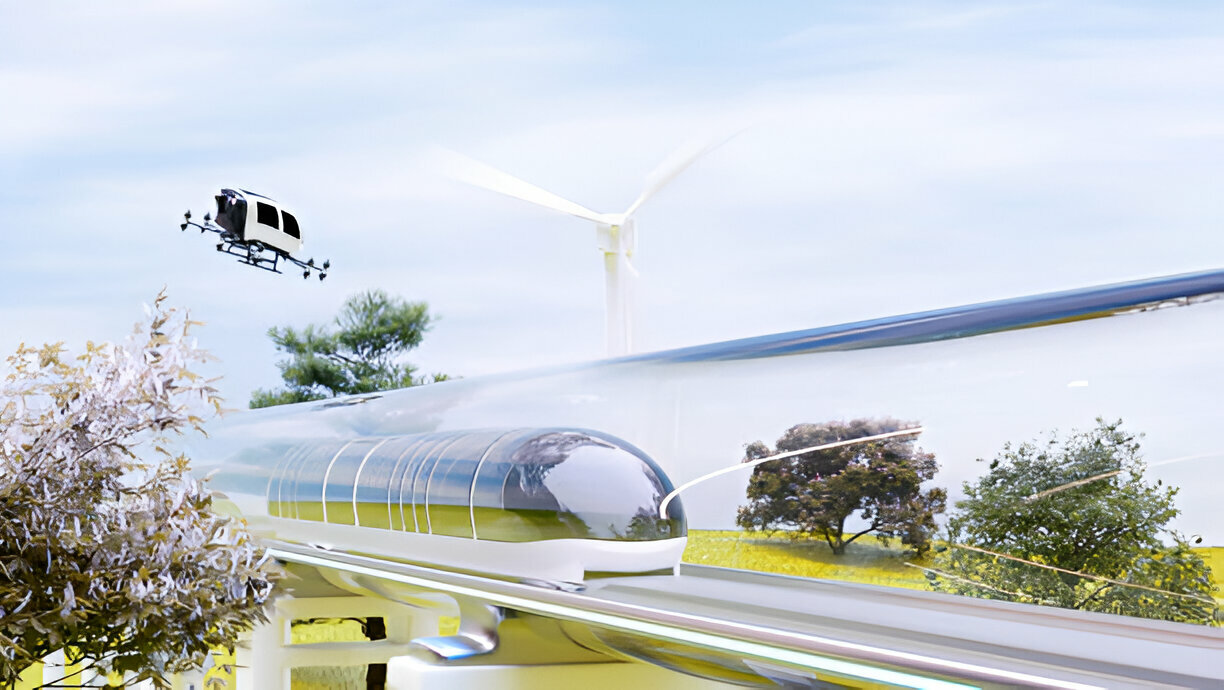Biofuel: Production, Functions, Advantages and Disadvantages

Biofuel is any fuel that is derived from biomass – that is, plant, algae material or animal waste. Since such feedstock material can be replenished readily, biofuel is considered to be a source of renewable energy, unlike fossil fuels such as petroleum, coal, and natural gas.
Biofuel is commonly advocated as cost-effective and being an environmentally benign alternative to petroleum and other fossil fuels, particularly within the context of rising petroleum prices coupled with increased concern over the contributions made by fossil fuels to global warming. Many critics express concerns about the scope of the expansion of certain biofuels because of the economic and environmental costs associated with the refining process and the potential removal of vast areas of arable land from food production.
Types of biofuels
Some long-exploited biofuels, such as wood, can be used directly as a raw material that is burned to produce heat. The heat in turn, can be used to run generators in a power plant to produce electricity. A number of existing power facilities burn grass, wood, or other kinds of biomass.
Liquid biofuels are of particular interest because of the vast infrastructure already in place to use them, especially for transportation. The liquid biofuel that’s in the greatest production is ethanol (ethyl alcohol), which is made by fermenting starch or sugar. Brazil and the United States are among the leading producers of ethanol. In the United States ethanol biofuel is made primarily from corn (maize) grain, and it is typically blended with gasoline to produce “gasohol,” a fuel that is 10 percent ethanol.
In Brazil, ethanol biofuel is made primarily from sugarcane, and it is commonly used as a 100-percent-ethanol fuel or in gasoline blends containing 85 percent ethanol. Unlike the “first-generation” ethanol biofuel produced from food crops, “second-generation” cellulosic ethanol is derived from low-value biomass that possesses a high cellulose content, including wood chips, crop residues, and municipal waste. Cellulosic ethanol is commonly made from sugarcane bagasse, a waste product from sugar processing, or from various grasses that can be cultivated on low-quality land. Given that the conversion rate is lower than with first-generation biofuels, cellulosic ethanol is dominantly used as a gasoline additive.
The second most common liquid biofuel is biodiesel, which is made primarily from oily plants (such as the soybean or oil palm) and to a lesser extent from other oily sources (such as waste cooking fat from restaurant deep-frying). Biodiesel, which has found the largest acceptance in Europe, is used in diesel engines and usually blended with petroleum diesel fuel in various percentages. The use of algae and cyanobacteria as a source of “third-generation” biodiesel holds promise but has been difficult to develop economically. Some algal species contain up to 40 percent lipids by weight, which can be converted into biodiesel or synthetic petroleum. Some estimates state that algae and cyanobacteria could yield between 10 and 100 times more fuel per unit area than second-generation biofuels.
Other biofuels include methane gas and biogas – which can be derived from the decomposition of biomass in the absence of oxygen and methanol, butanol, and dimethyl ether – which are in development.
Many assume that the material is used just for transportation but biofuel can provide hydrogen, clean up oil, work as cooking oil, and more. Biofuels can work as an alternative to replacing energy needs from vehicle fuel to central home heating.
Here are the top ten uses for biofuel
1. Transportation
More than 30% of energy consumed in the United States for example is used for vehicle transportation. Across the globe, transportation accounts for about 34% of energy consumption, this means that over a third of oil is used to operate vehicles.
The main problem with alternative energy such as solar, wind and other alternative energy sources is that they are not practical for transportation. Experts believe that efficient breakthroughs in practical technological advances are still decades away.
More major car brands have already invested in stations for biofuel-powered vehicles.
2. Energy Generation
In addition to producing fuel for transportation, biofuel can be used to generate power in backup systems; this includes facilities such as schools, hospitals, etc., that are located in residential areas.
In fact, the largest market for biofuel turned into energy generation for over 350,000 homes from landfill gas – is in the United Kingdom.
3. Provide Heat
Bioheat has grown over the past few years. The majority of biofuel that is used for heating is substantial. Wood is the most practical method to heat, and that is why most houses use wood burning stoves rather than gas or electricity.
A blend of biodiesel however, will help reduce the emission of harmful air pollutant such as nitrogen oxides, sulphur dioxide, volatile organic chemicals (VOCs), and polycyclic organic matter (POMs), resulting from the activities of wood burning.
4. Charging Electronics
According to scientists from Saint Luis University, a fuel cell was developed with cooking oil and sugar to generate electricity; consumers will be able to use these cells instead of using electricity generated from sources that threaten our environment. Consumers may be able to use fuel cells in place of batteries to charge anything from computers to cell phones. While they are still in the process of development, these fuel cells have the potential to become a readily available source of power.
5. Clean Oil Spills and Grease
Biofuel is known to be environmentally-friendly; biofuel can also help to clean up oil spills and grease. It has been tested to work as a potential cleaning agent for areas where crude oil contaminated the waters.
The results have also been found to increase the recovery areas and allow it to be removed from the water. Biofuel can also be used as an industrial solvent for cleaning metal, which is also beneficial due to its lack of toxic impact.
6. Cooking
While kerosene is the most common ingredient to use for stoves and non-wick lanterns, biodiesel works just as great.
7. Lubricate
Diesel fuel is required to reduce the sulphur concentration as sulphur provides the most lubricity of the fuel. This is important when it comes to keeping the engine properly functioning and to avoid engine failure. Biodiesel can help reduce friction and increase lubricity thereby making the engines last longer.
8. Remove paint and adhesive
Biofuel can replace the toxic products that are designed to remove paint and adhesives. Biofuel is also considered as the best method for removing non-critical applications.
9. Create energy when fossil fuel runs out
As oil supply is starting to run out, this has caused us to question how fuel can be extracted without destroying the environment. Biofuel – will help the government create a stable method of producing energy that is cost-effective.
10. Reduce cost and need for imported oil
Analysts say that replacing imported oil with biofuel will help to stabilise economies whenever oil supply is disrupted as countries become reliant on themselves for their energy needs instead of an overdependence on oil imports.
Various Advantages and Disadvantages of Biofuels
Fuels that have been extracted from plants and crops are known as biofuels. Of these, the most commonly extracted and used one is Bioethanol or simply Ethanol and Biodiesel. It is blended with gasoline and can be used as an alternative fuel for your car. Plant-based fuels come from renewable sources, can be grown anywhere and have lower carbon emissions as compared to fossil fuels.
Biofuels not only help a struggling economy by providing jobs, but also helps in reducing greenhouse gases to a large extent by emitting less pollution.
We should increase our development of alternative fuels, taking advantage of renewable resources, like using corn and sugar to produce ethanol or soybeans to produce biodiesel.
As prices of crude oil are soaring day by day, especially with new conflicts arising in the different regions that produce – disrupting supply, most people are switching to biofuels to save money and reduce their dependence on oil.
Biofuels are produced from wheat, corn, soybeans and sugarcane, which can be produced again and again on demand, so they are highly sustainable.
Though biofuels have many advantages over their counterparts, there are some other complicating aspects that we need to look at. But first let’s touch on some its advantages.
Various Advantages of Biofuels
1. Efficient Fuel
Biofuel is made from renewable resources and relatively less-flammable compared to fossil diesel. It has significantly better lubricating properties.
It causes less harmful carbon emission compared to standard diesel. Biofuels can be manufactured from a wide range of materials and the overall cost-benefit of using them is much higher.
2. Cost-Benefit
As of now, biofuels cost the same in the market as petrol does. However, the overall cost-benefit of using them is much higher. They are cleaner fuels, which means they produce fewer emissions when they burn. And with the increased demand for biofuels, they have the potential of becoming cheaper in the future as well.
According to the RFA (Renewable Fuels Association) in its Ethanol Industry Outlook report, “Ethanol was the highest-octane, lowest-cost motor fuel on the planet.” Additionally, the U.S. Department of Energy (DOE) allocated $73 million for 35 bioenergy research and development (R&D) projects a couple of years ago. Pretty certain by now those various researches will start bearing fruit.
With goals such as reducing drop-in biofuel costs which aims to “enable high-value products from biomass or waste resources” and reduction in the cost of producing biopower, the use of biofuels will be less of a drain on the wallet in the near future.
3. Durability of Vehicles’ Engine
Biofuels are adaptable to current engine designs and perform very well in most conditions. It has higher cetane and better lubricating properties. When biodiesel is used as a combustible fuel, the durability of the engine increases.
There is also no need for engine conversion. This keeps the engine running for longer, requires less maintenance and brings down overall pollution check costs. Engines designed to work on biofuels produce less emission than other diesel engines as mentioned previously.
4. Easy to Source
Petrol is refined from crude oil, which happens to be a non-renewable resource. Although current reservoirs of natural gas will sustain for many years, they will end sometime in the future.
Meanwhile biofuels are made from many different sources such as manure, waste from crops, other byproducts, algae and plants grown specifically for the fuel; hence you are always assured of its presence.
5. Renewable
Most of the fossil fuels will expire and end up in smoke one day as mentioned. Since most of the sources like manure, corn, switchgrass, soybeans, waste from crops and plants are renewable and are not likely to run out any time soon, it makes the use of biofuels efficient in nature. Also, these crops can be replanted again and again.
6. Reduce Greenhouse Gases
Studies suggest that biofuels reduce greenhouse gases by up to 65 percent. Fossil fuels when burnt produce large amounts of greenhouse gases i.e., carbon dioxide in the atmosphere. These greenhouse gases trap sunlight and cause the planet to warm.
Besides, the burning of coal and oil increases the temperature and causes global warming. To reduce the impact of greenhouse gases, people around the world are implored to use biofuels.
7. Economic Security
Not every country has large reserves of crude oil. For them, having to import the oil puts a huge dent in their economy. If more people start shifting towards biofuels, a country can reduce its dependence on fossil fuels.
Biofuel production increases the demand for suitable biofuel crops, providing a sizeable boost to the agricultural industry. Fueling homes, businesses and vehicles with biofuels are less expensive than fossil fuels. More jobs will be created with a growing biofuel industry, which will keep our economies secure.
8. Reduce Dependence on Foreign Oil
While locally grown crops have the capacity to reduce a nation’s dependence on fossil fuels, many experts believe that it will take a long time to solve our energy needs. As prices of crude oil are touching sky high, we need some more alternative energy solutions to reduce our dependence on fossil fuels and biofuel can fill that gap strategically.
9. Lower Levels of Pollution
Since biofuels can be made from renewable resources, they cause less pollution to the planet. However, that is not the only reason why the use of biofuels is being encouraged.
They release lower levels of carbon dioxide and other emissions when burnt compared to standard diesel. Its use also results in a significant reduction of PM emissions.
Although the production of biofuels creates carbon dioxide as a byproduct, it is frequently used to grow the plants that will be converted into the fuel. This allows it to become something close to a self-sustaining system.
Besides, biofuels are biodegradable and that greatly reduces the possibility of soil contamination and contamination of underground water during transportation, storage or use.
As mentioned, there are some disadvantages to the usage of Biofuels. Here are a few discussed below.
Disadvantages of Biofuels
1. High Cost of Production
Even with all the benefits associated with biofuels, they are quite expensive to produce in the current market. As of now, the interest and capital investment being put into biofuel production is fairly low, but it can match demand.
If the demand increases, then increasing the supply will be a long-term operation, which will be quite expensive. Such a disadvantage is still preventing the use of biofuels from becoming more popular.
2. Monoculture
Monoculture refers to the practice of producing the same crops year after year, rather than producing various crops through a farmer’s fields over time. While this might be economically attractive for farmers but growing the same crop every year may deprive the soil of nutrients that are put back into the soil through crop rotation.
The problems with growing a single crop over large tracts of land are many. First, growing only one crop changes the environment in terms of the food available to pests, and they are free to destroy an entire crop.
Secondly, we could treat the pests mentioned above with pesticides, but a few of those pests will inevitably become resistant to the chemicals intended to kill them and they can eventually inhabit the single field of crops, raving it drastically thereby reducing the overall yield needed.
The next problem comes with genetic engineering when we decide to modify the crop that is resistant to pests without the need for pesticides. It is still likely that at least a few pests aren’t affected by the modification and the problem remains. Thus, the key to healthy crops worldwide is biodiversity that is simply having lots of different types of plants and animals around.
3. Use of Fertilizers
Biofuels are produced from crops, and these crops need fertilizers to grow better. The downside of using fertilizers is that they can have harmful effects on the surrounding environment and may cause water pollution. Fertilizers contain nitrogen and phosphorus. They can be washed away from soil to nearby lakes, rivers or ponds.
4. Shortage of Food
Biofuels are extracted from plants and crops that have high levels of sugar in them. However, most of these crops are also used as food crops. Even though waste material from plants can be used as raw material, the requirement for such food crops will still exist. It will take up agricultural space from other crops, which can create a number of problems.
Using existing land for biofuels may not cause an acute shortage of food; however, it will definitely put pressure on the current growth of crops. One major worry being faced by people is that the growing use of biofuels may just mean a rise in food prices as well.
Some people prefer using algae, which grows in very inhospitable regions and has a limited impact on land use. However, the problem with algae is water use.
5. Industrial Pollution
The carbon footprint of biofuels is less than the traditional forms of fuel when burnt. However, the process with which they are produced makes up for that. Production is largely dependent on lots of water and oil.
Large scale industries meant for churning out biofuel are known to emit large amounts of emissions and cause small scale water pollution as well.
Unless more efficient means of production are put into place, the overall carbon emission does not get a very big dent in it.
6. Water Use
Large quantities of water are required to irrigate the biofuel crops which might impose substantial strain on local and regional water resources, if not managed wisely. In order to produce corn-based ethanol to meet local demand for biofuels, massive quantities of water are used and that could put unsustainable pressure on local water resources.
7. Future Rise in Price
Current technology being employed for the production of biofuels is not as efficient as it should be. Scientists are engaged in developing better means by which we can extract this fuel. However, the cost of research and future installation means that the price of biofuels will see a significant spike.
As of now, the prices are comparable with petrol and are still feasible. Constantly rising prices may make the use of biofuels as harsh on the economy just as the rising fuel prices are doing right now.
8. Changes in Land Use
If a land is used to grow a biofuel feedstock, it has to be cleared of native vegetation, which then leads to ecological damage done in three ways.
First, the damage is caused by destroying local habitat, animal dwellings, micro-ecosystems and reduces the overall health of natural resources of the region.
The native forest is almost always better at removing CO2 from the atmosphere than a biofuel feedstock partly because the CO2 remains trapped and is never released by burning as with fuel stock.
Secondly, the damage is done in the carbon debt created. When it is needed to deforest an area and prepare it for farming as well as to plant specific crops, this leads to the production of greenhouse gases and puts the region at a net positive GHG production even before a single biofuel is produced.
Estimates have shown that deforesting native land can actually produce a carbon debt that can take up to 500 years to repay.
Finally, changing land to an agricultural status almost always means fertilizers are going to be used to get the most yields per area. Which means there will be problems with agricultural pollution inevitably.
Therefore, creating more farmland is likely to damage waterways and energy used in treatment plants and other mitigation strategies will lead to an even larger carbon debt.
9. Global Warming
These biofuels which are mostly hydrogen and carbon, produce carbon dioxide when they burn which contributes to global warming. It is true that biofuels produce less GHG emissions than fossil fuels, but that can only serve to slow global warming and not stopping or reversing it.
Therefore, biofuels may be able to help ease our energy needs, but they won’t solve all of our problems. They can only serve as substitutes for the short term as we invest in other technologies.
10. Weather Problem
Biofuel is less suitable for use in low temperatures. It is more likely to attract moisture than fossil diesel, which creates problems in cold weather. It also increases microbial growth in the engine that clogs the engine filters.
Overall, Biofuel as with other alternative sources of energy will ease pressure and our massive dependency on fossil fuel. Hopefully, more research will lead to cleaner and more sustainable energy solutions in the future. Thanks for reading.











No Comments